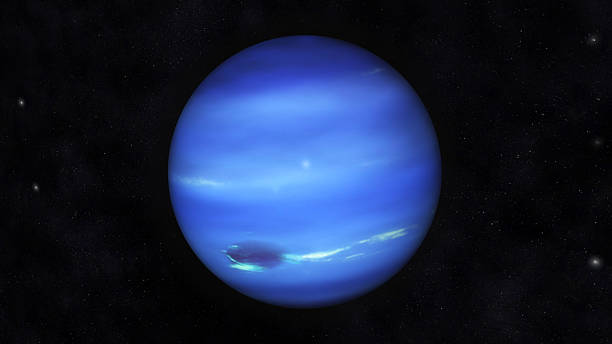Clouds of Neptune Vanish Due to Sun’s Magnetic Dance, Study Reveals
The clouds of Neptune vanished due to sun’s magnetic dance, study reveals, linking disappearing azure formations to solar cycles and ultraviolet radiation.

The clouds of Neptune began vanishing from its mid-latitudes, and they eventually faded away entirely in 2019. (PHOTO: Getty Images)
Clouds of Neptune Defy Expectations: Astronomers Reveal Startling Disappearance
Surprising news emerged about the chilly ice giant in our solar system, as astronomers shared a discovery about the disappearing clouds of Neptune. According to Space, the astonishing transformation came to light after scientists scrutinized images from 1994 to 2022. Strangely, around 2019, the clouds of Neptune began vanishing from their mid-latitudes, and they eventually faded away entirely.
The reason behind this swift change was unraveled by researchers led by Imke de Pater from the University of California, Berkeley. According to the report, they found a connection between Neptune’s clouds and the sun’s magnetic shifts that occur over an 11-year cycle. Although the sun might seem like a hot ball, it’s a sea of charged particles called plasma, creating its magnetic fields. When these fields twist and flip every 11 years, the sun releases a burst of ultraviolet radiation, which reaches even distant Neptune.
READ ALSO: NEW INSIGHTS FROM WEBB TELESCOPE: SECRETS OF HERBIG HARO OBJECT IN EARLY STAR FORMATION
Clouds of Neptune Behavior Mirrors Sun’s Cycles: UV Radiation Suspected to Shape Cloud Formation, New Study Shows
The team from W. M. Keck Observatory and NASA’s Hubble Space Telescope noticed that the clouds of Neptune behaved in sync with the sun’s cycles. According to New Scientist, clouds became prominent about two years after the solar peak, coinciding with an increase in ultraviolet radiation. This radiation could be initiating a chemical reaction in Neptune’s atmosphere, forming clouds. Interestingly, the planet’s brightness changed with its cloud cover, revealing a link between the two.
Although the clouds of Neptune vanished completely in 2020, recent signs of cloud resurgence hint at their return, as solar UV rays grow stronger. The researchers’ vigilant watch over this distant world’s climate promises more insights into the intriguing interplay between the sun’s activity and Neptune’s cloudy enigma.






































